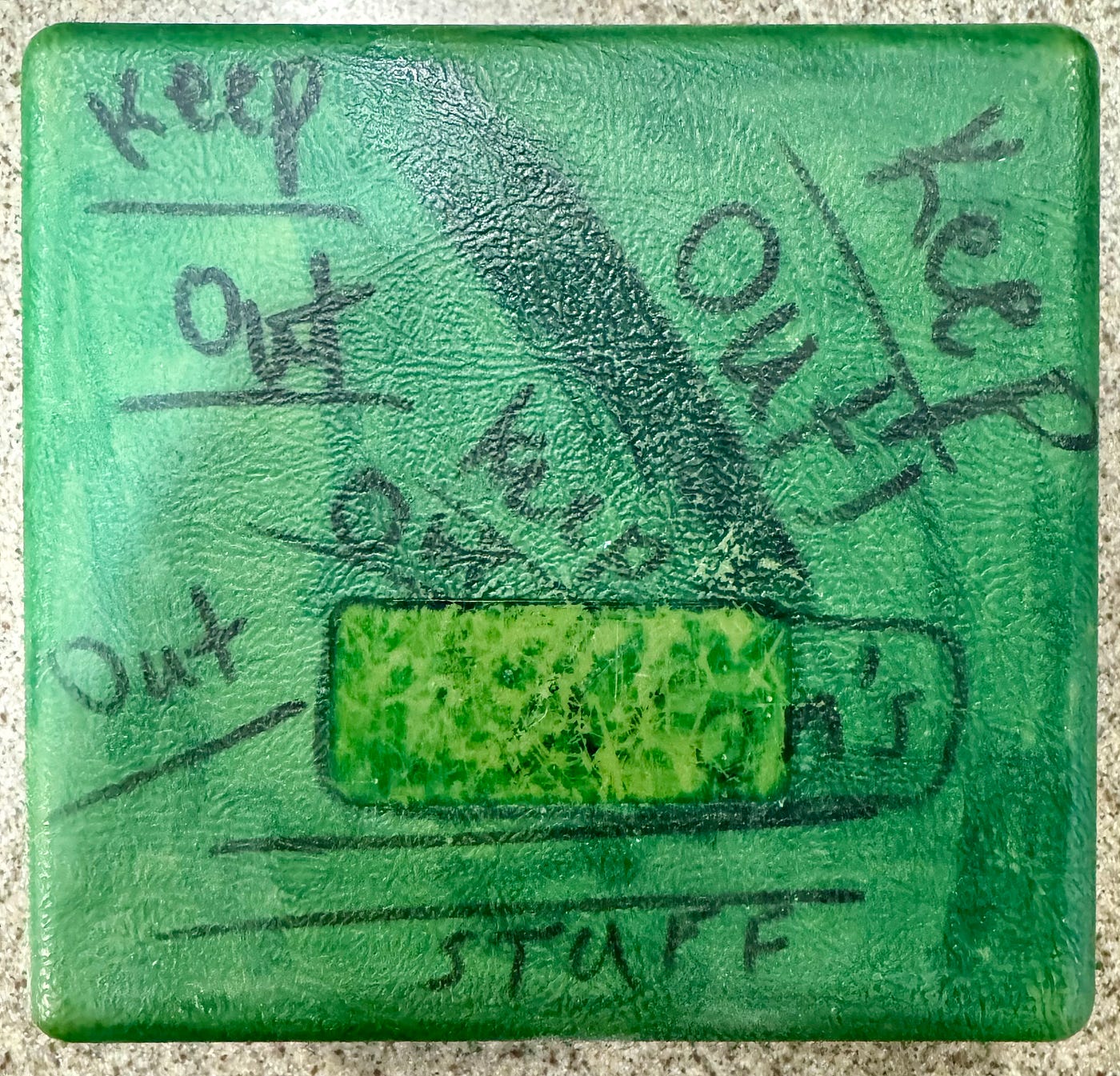
At some point in my early childhood, I acquired the cube-shaped, green box shown above. It was probably designed to hold 3 x 5 cards or pictures. I stored a number of pictures in that box for years. The box is no more than five and one half inches square and perhaps four inches deep; just big enough for a collection of old photos.

For me, that box became the repository for an odd assortment of things I collected up until I moved from my childhood home (some of them pictured above): a small shovel given as a memento of a groundbreaking ceremony I attended, I small bag of shredded money that I got on a school field trip which I split with a friend, a piece of rock labeled as part of the London Bridge (which probably wasn’t from the London Bridge), a membership card in a club I created with my best friend when we were in the 7th grade, a letter from that same friend sent when he was living in Spain. (Incidentally, he’s still one of my best friends.)
I don’t generally attach a lot of sentiment to things and rarely do I struggle with the decision to throw something away or donate it to a thrift store. That little box, however, that’s been with me for as long as I can remember, somehow holds a lot of sentimental value.
That little bit of “London Bridge” rock was given to me by my paternal grandfather, Grandpa Tom, for one of my birthdays most likely before I turned 10. I’m not sure which one. He passed away in 2011 at what seemed a young 83 years old. He’s a man I admired so much. From the stories my dad’s told me, I think he was somewhat austere when his children were still at home, but as a grandfather, he was a kind, loving, patient man full of wisdom and a love for puzzles. I learned to love reading, puzzles, and chess as I spent time with him.
I had the privilege of living with my paternal grandparents for a time while I was working on my university degree. What a choice season of my life that was!
It’s been a long time since I’ve pulled that bit of rock out of the keepsake box. Just holding it in my hand conjured so many fond memories of time with my grandparents.
Therein lies the reason so many people choose (or perhaps struggle) to let go of things.
We hold onto things because we cannot reconcile the passage of time, the evanescence of memories, and the inevitability of change. In these physical remnants of our past, we find solace — a tangible connection to what once was, a testament to the enduring power of memory. Each object carries with it a story, a fragment of our personal history, and letting go means relinquishing a part of ourselves. So we cling to them, hoping to preserve not just the things, but the emotions, the moments, the essence of who we once were. — Attributed to Haruki Murakami
Holding too tightly to things of the past can make it hard (impossible, even) for us to progress. Yearning for the past becomes dangerous to our mental and emotional wellbeing when we spent too much time either caught up in what was or fixated on what might be. Intuitively, I think most people understand that the present is all we have. We can’t go back and relive the past or change it. Nor can we arrive in the future any faster than the hands of time allow.
In contrast, cherishing (keeping with care and affection) is an attribute that can be present at all times. We can cherish the past, present, and future without needlessly attempting to live outside the present moment.
It’s okay to hold onto things; to cherish things. The small baubles in that box, even though they hold no monetary value — or perhaps because they hold no monetary value, are important to me. Sometimes, holding onto things from the past can be a source of connection to our past; a source of comfort. They remind us of who we are, when we come from, and may just inform where we’re going.
No comments:
Post a Comment